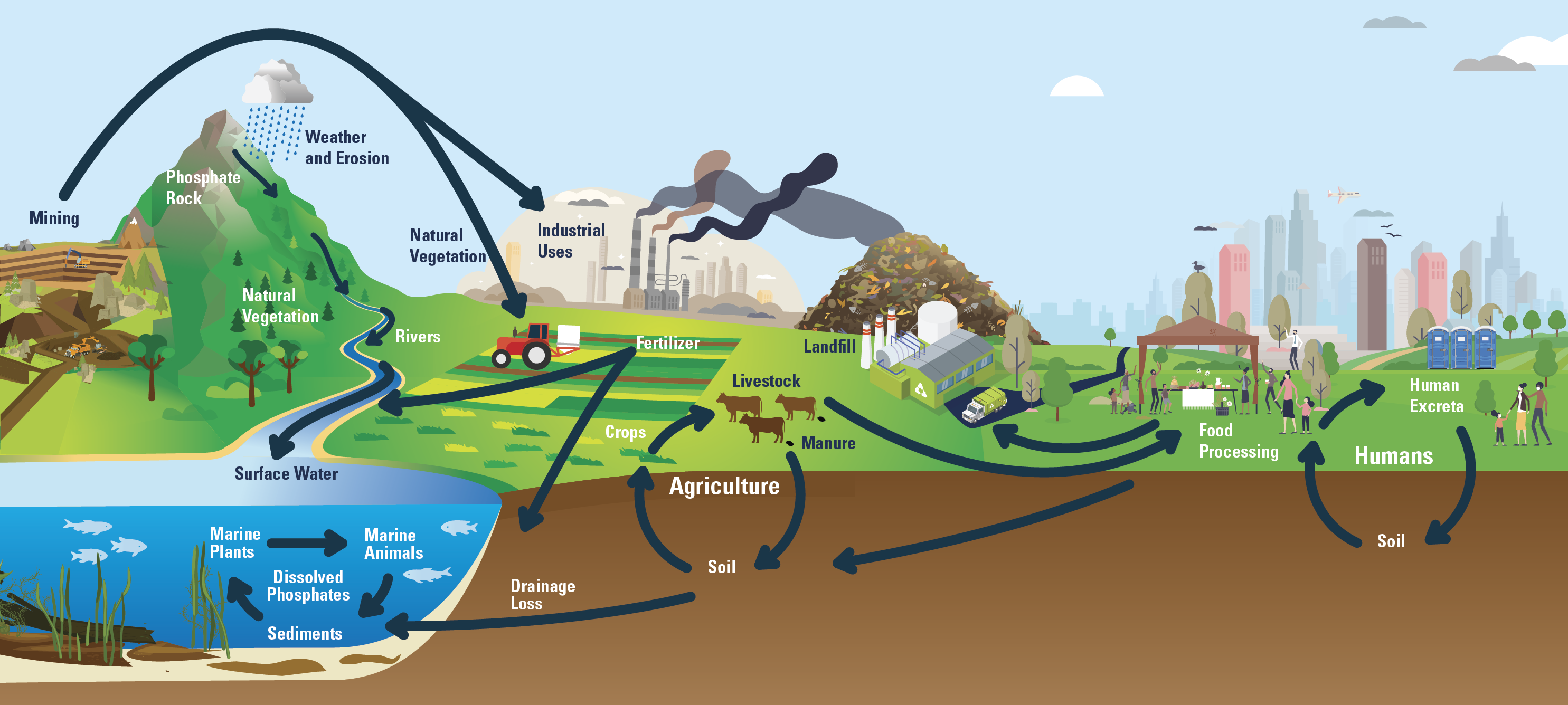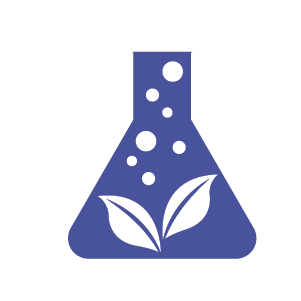25-in-25: A Roadmap Toward US Phosphorus Sustainability
STEPS announces our first major convergence research effort to advance phosphorus sustainability in the United States.
What can we do to achieve phosphorus sustainability?
STEPS advocates for a 25-in-25 vision of phosphorus sustainability for the United States: reducing human dependence on mined phosphates and losses of phosphorus to the environment by 25% each in the next 25 years. This roadmap identifies nine Impact Opportunities (IOs) that should be pursued to advance this vision. This project is the result of extensive work between stakeholders, STEPS participants, and RTI Innovation Advisors. Read the roadmap here.

Who is with us?
To achieve more sustainable use and management of phosphorus, we must inspire all of you, as policymakers, researchers, farmers, producers, industry and municipal employees, and members of society, to align your actions and goals toward a more sustainable phosphorus future. We have built this roadmap to enable all readers to find their own path toward sustainable phosphorus management over the next 25 years. Where are you best suited to create a positive impact? This roadmap identifies nine key stakeholder groups we think are essential to advancing the vision:
• Advocacy
• Education, academia, and nonprofits
• Farmers and producers
• Finance
• Food, fertilizer, and agriculture industry
• Government, regulators, and standards
• Infrastructure and wastewater treatment industry
• Mining and other industries
• Public and media
We hope that this document sparks new thinking, catalyzes new conversations, encourages new actions, and reinforces commitments to current actions
Our Nine Impact Opportunities

1. Optimize Use
Improve phosphorus use efficiency in agriculture across new, recycled, and existing (legacy) phosphorus: Improving phosphorus use efficiency will reduce costs and demand for phosphate mining, increasing farmer income and decreasing phosphorus water pollution. To achieve this, microbial- and plant-based solutions must be enhanced, circularity must be improved, adoption of new solutions should be incentivized, and partnerships should be encouraged.

2. Reduce Food Waste
Close food waste loops in the food supply chain to minimize phosphorus loss: Actors in the food supply chain must engage in reducing and recovering food waste. Upcycling food waste at the site of generation to avoid separation issues, adopting technology advancements and laws that keep organic waste or compost out of landfills, and increasing consumer awareness will all be necessary.

3. Reclaim Waste
Process animal and farm waste more economically for reuse as fertilizers: Developing technology to reuse animal and farm waste as a source of phosphorus for fertilizer could meet as much as 50% of U.S. demand. But successful impact requires improved business models, rules to limit over-application, and economically viable processing technologies that make waste products both desirable and feasible.

4. Enhancing Monitoring
Improve phosphorus monitoring and national coordination to facilitate better environmental management: One key to better phosphorus management is real-time data networks that enable better monitoring, modeling, and enforceable regulations. Citizen science should be leveraged, and existing, private-party measurements that are not currently publicly reported (e.g., from drinking water providers) should be incorporated.

5. Recover Valued Products
Produce valued phosphorus-based products from waste recovery processes: Recovering phosphorus from wastewater streams can reduce phosphorus-driven water pollution and supplant demand for mineral phosphate. Focusing on high-value products, such as those that are based on co-recovery (e.g., struvite, biosolids), and including economic assessments in the technology development process can support development of compelling solutions.

6. Grow Markets
Develop and grow markets for proven solutions for phosphorus management: Developing and growing the markets for sustainable phosphorus products will increase the consumer demand and lower barriers to future solutions. Advancements in true cost are needed to support the business case, as are more availability of patient capital, innovative financing, and insurance mechanisms.

7. Reduce Mining Waste
Reduce mining waste by reprocessing and repurposing it for new phosphorus-based products: Mining companies have an important role in phosphorus sustainability, and this should be one component of their overall strategy. Maximizing phosphorus yield through alternative recovery, extraction, and processing methods is part of the solution, as is exploring ways to reuse mining waste.

8. Accelerate Solutions
Accelerate technology adoption through active stakeholder engagement: Stakeholder engagement can help overcome nonscientific or nontechnological hurdles, such as regulatory, social, or ethical concerns, and advance technology adoption. Researchers working on phosphorus management should place extra emphasis on stakeholder engagement early in technology development.

9. Increase Awareness
Elevate phosphorus sustainability in the public consciousness: Successfully raising awareness of phosphorus sustainability in the public is necessary to achieve behavior change and advocacy. Once consumers are aware of their individual phosphorus footprints, they need a way to advocate for, purchase, and consume products that support phosphorus sustainability.
If you have questions, comments, or feedback about our roadmap, or, if you’d like to work with the STEPS Center on achieving our vision, email us at steps-contact@ncsu.edu.
